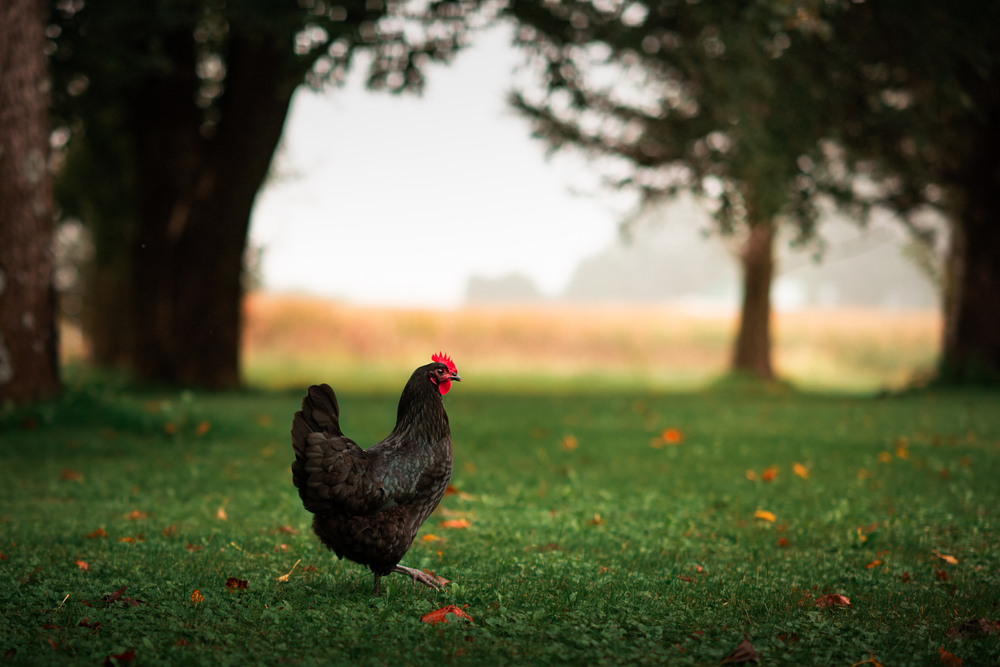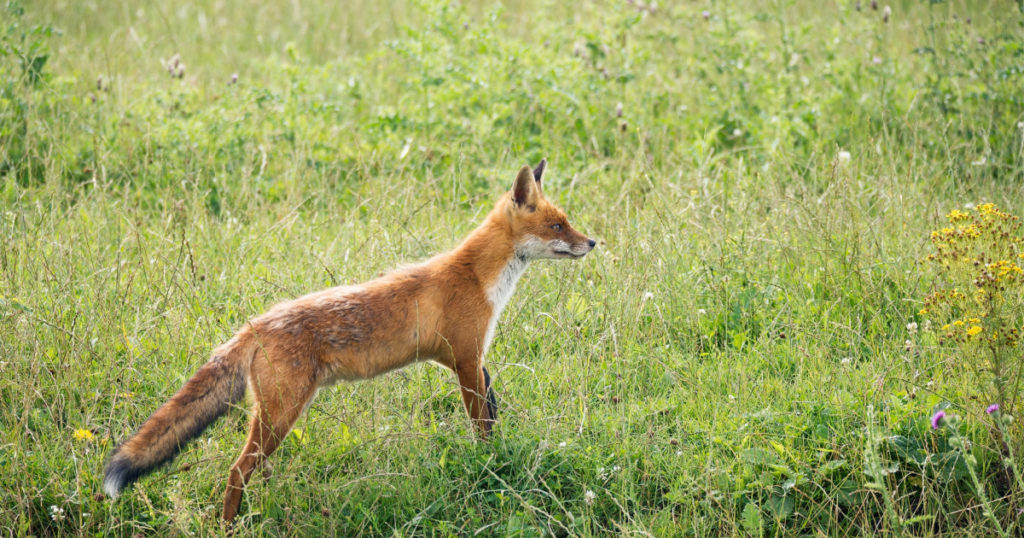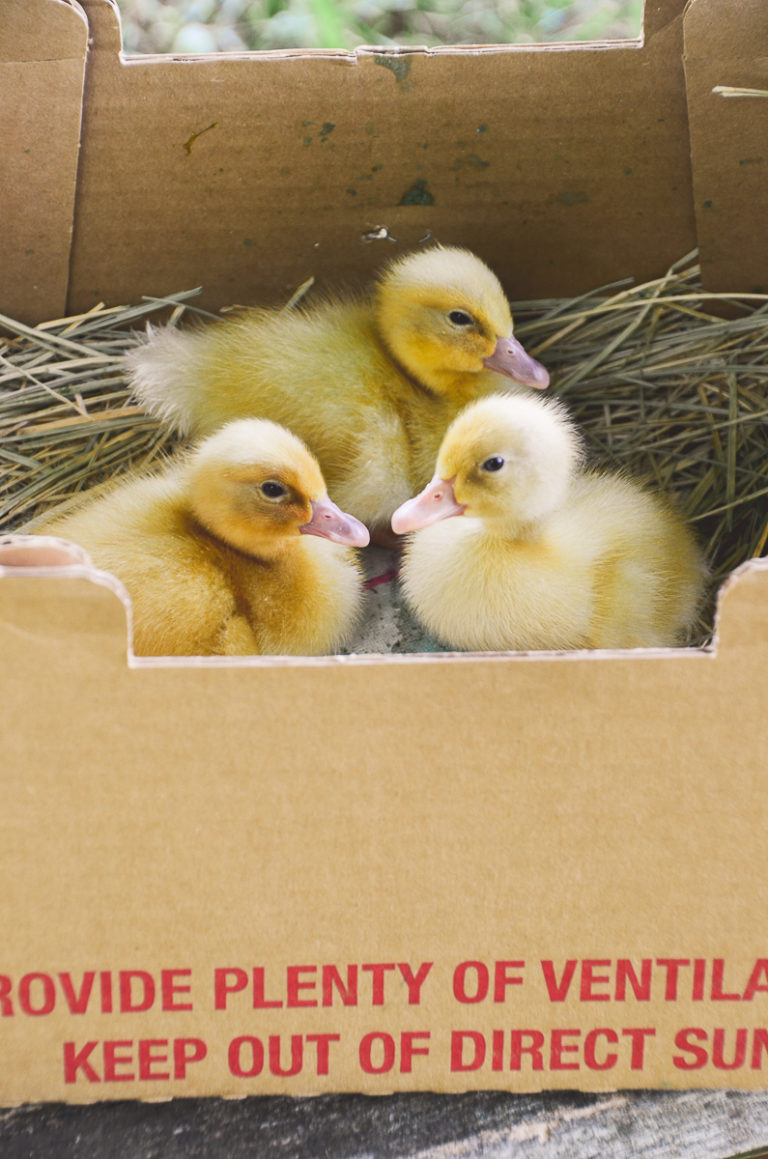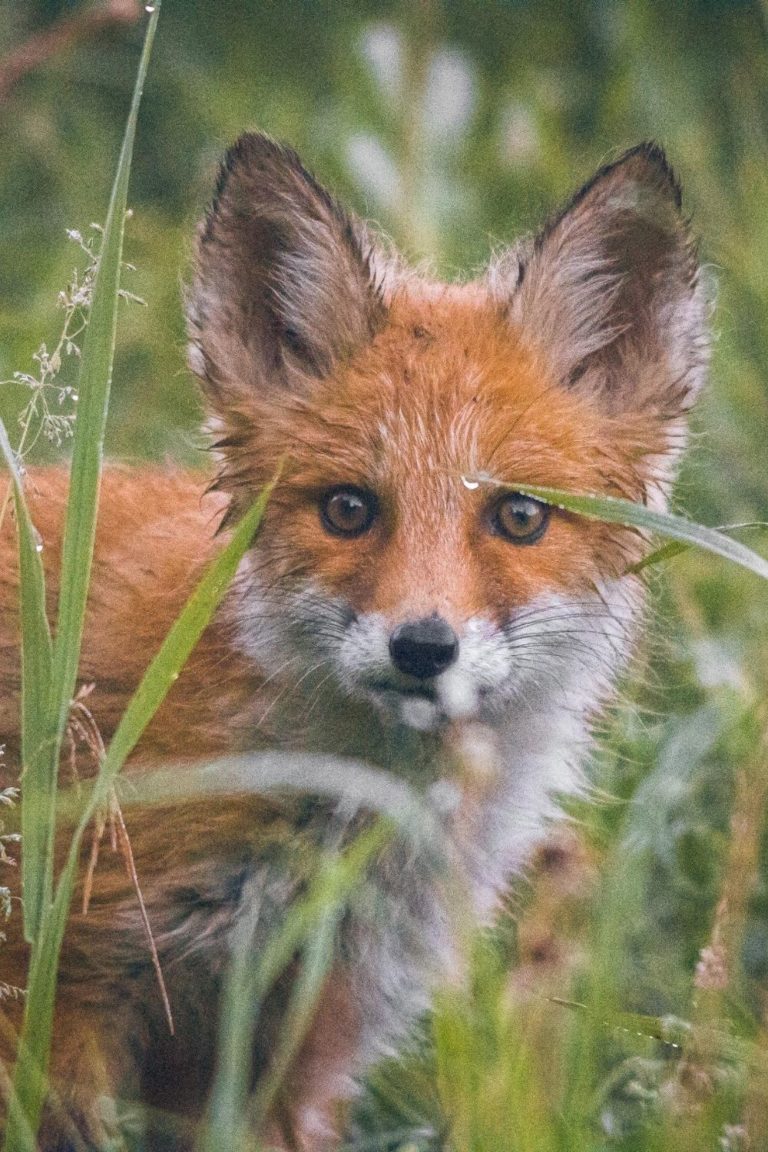The 5 Biggest Mistakes New Chicken Keepers Make
Discover the top five mistakes new chicken keepers often make. Ensure the health and happiness of your backyard flock. Avoid common pitfalls and enjoy a successful chicken keeping journey.
Are you getting chickens this spring? Starting your backyard flock of chickens is such an excited endeavor and can be a rewarding experience, but it’s important to avoid common mistakes that many beginners make. We’ve all been there, and I am guilty of making some of these mistakes myself, it doesn’t mean you’re a bad chicken keeper, some things just come with experience. After raising and talking about chickens for over a decade I am going to share what I think are the biggest mistakes I have either personally experienced or see others struggle with.
Whether you’re raising chickens for eggs, meat, or as pets, there are several factors to consider when starting, first time chicken keepers often make mistakes related to selecting the right breed for them, insufficient housing, diet, health and disease management, and predator protection. Understanding the most frequently made mistakes can help you avoid them and ensure the health and happiness of your birds.
I want you have an amazing time raising chickens, and the best way to do that is by educating yourself and making the right preparations. Don’t worry; I’m here to help you every step of the way. Today I am going to explain the biggest mistakes made by first time chicken owners, and how we can avoid them, or if you have found yourself with a problem, how to fix it! By avoiding some common mistakes and being well-prepared, I do think you’ll enjoy a rewarding and fulfilling experience chicken keeping!
Common Mistakes First Time Chicken Owners Often Make

Not Selecting the Right Chicken Breeds
It can be so easy to get caught up in the “trendy chicken breed”. I know that sounds odd but it’s a real thing. A couple of years ago, it was Lavender Orpingtons, and the Ayam Cemani seems to be a perennial “It Girl”. However, while these breeds are undoubtedly appealing, they might not always be the best choice for everyone. Selecting the right chicken breed requires considering several key factors beyond the current trends.
Understand Your Climate: Chickens are adaptable, but certain breeds fare better in specific climates. For instance, if you live in an area with harsh winters, you might want to consider cold-hardy breeds like the Plymouth Rock or the Sussex. These breeds have thicker feathering and are more capable of withstanding lower temperatures. On the other hand, if you’re in a warmer climate, lighter breeds such as Leghorns or Anconas, which are less prone to overheating, might be more suitable.
Space Constraints: The amount of space you have available is another critical factor. Breeds like the Bantams are smaller and can thrive in more confined spaces, making them ideal for urban or suburban backyards. Conversely, larger breeds such as Jersey Giants require more room to roam and enjoy foraging, and might not be suitable for smaller yards.
Egg Production vs. Ornamental Purpose: If your primary interest is egg production, breeds like Rhode Island Reds and Australorps are known for their high egg yield. These breeds are also relatively hardy and easy to care for, making them great for beginners. However, if you’re more interested in ornamental birds, breeds like the or Silkies or Polish chickens, with their distinctive appearances, might be more appealing. It’s important to note, though, that ornamental breeds often lay fewer eggs.
Temperament and Child-Friendliness: If you have children or are looking for a more interactive experience, consider breeds known for their friendly and docile nature. The Buff Orpington and the Cochin are known for their gentle disposition, making them great family pets. In contrast, some breeds can be more skittish or aggressive, which might not be ideal in family settings.
Longevity and Health Considerations: Some breeds are more susceptible to health issues than others. Researching the common health concerns of a breed and their typical lifespan can help you prepare for long-term care. Breeds like the Ameraucana are generally hardy, while other breeds can be prone to issues.
Here are a few of my favorites, and what I always suggest to new chicken keepers. I will always have these birds in my flock, I really enjoy them all and find them a great addition to a mixed flock.
- Buff Orpington: Buffs are a friendly and calm breed, but can be prone to going broody often. But if you let them sit on eggs they are excellent mothers. I have a Buff named Karen who I adore, she has raised the majority of my flock, both from egg and adopted chicks, it is a joy to watch her interact with her chicks.
- Plymouth Rock (aka Barred Rock) : A easy going dual-purpose breed with good egg production and meat quality.
- Jersey Giants: These gentle giants are known for their impressive size and mild temperament, making them a unique addition to any flock. While they are not the most prolific layers, their friendly nature and striking presence make them a favorite in my flock.
- Australorp: Australorps are known for their exceptional egg-laying abilities and hardy nature. They are also quite docile, making them easy to handle for beginners.
- Wyandotte: These birds are not only beautiful but also hardy and good egg layers. They have a calm disposition and are well-suited to colder climates.
In my experience Hybrid Chickens are often great egg layers with outgoing friendly personalities, but their high level of egg production can take a toll on these girls, leading to shorter lifespans, and it is not uncommon to see egg development related problems, such as egg-binding, prolapse and egg-peritonitis.
Researching different breeds and choosing one that fits your goals and property is important. Don’t just choose a breed because it looks pretty or is popular.

Housing and Shelter
When it comes to raising chickens, providing adequate housing and shelter is essential. Here are some common mistakes that new chicken keepers make when it comes to housing and shelter:
Inadequate Space
One of the most common mistakes new chicken keepers make is not providing adequate housing for their flock. A well-designed chicken coop is essential for the health and well-being of your chickens. It should be safe, secure, and offer ample space for nesting, roosting, and free movement. A critical mistake often made is choosing or constructing a coop that is too small for the intended number of chickens. As a general rule, each chicken should have at least 2-3 square feet of space inside the coop. Additionally, for the outdoor run, it is recommended to allocate at least 8-10 square feet per chicken.

Poor Ventilation
Another common mistake is not providing adequate ventilation in the chicken coop. Good ventilation is essential for maintaining good air quality and preventing respiratory issues in your chickens. A well-ventilated coop should have openings near the top and bottom of the walls to allow for airflow. You can also install vents on the roof or use windows to provide additional ventilation.
Lack of Predator Protection
Predators like raccoons, foxes, mink, weasels, and neighborhood dogs can seriously threaten your chickens. I know from experience one of the hardest lessons new chicken keepers can learn is failing to provide adequate predator protection for their flock. Making sure your coop is secure and predator-proof can prevent you from waking up to a slaughter scene in your yard. This means using sturdy materials like hardware cloth or welded wire mesh to cover all openings, including windows and ventilation openings. You should also bury wire mesh or hardware cloth at least 12 inches deep around the perimeter of the coop to prevent predators from digging under the walls. I love protecting my run with solar powered electric netting Finally, lock the coop securely at night to keep predators out.

Feeding and Nutrition
Feeding your chickens a balanced diet is essential to ensure that they remain healthy and productive. Here are some common mistakes to avoid when feeding your chickens.
Unbalanced Diet
Chickens require a balanced diet that includes protein, carbohydrates, fats, vitamins, and minerals to maintain optimal health. However, it’s important to note that their nutritional requirements vary significantly depending on their age, and stage of life. Tailoring their diet to these changing needs is crucial for their overall health and productivity.
- Chicks (0-6 weeks): In their early stages of life, chicks require a diet high in protein to support rapid growth and development. Starter feeds typically contain about 18-22% protein and are specifically formulated to provide the essential nutrients needed for healthy growth. It’s important to ensure that chicks have constant access to their feed, as they grow rapidly during this stage.
- Growers (6 weeks to laying age): As chickens transition from chicks to pullets, their protein requirements decrease slightly. Grower feeds usually contain around 16-18% protein. This stage is crucial as the birds continue to grow but at a slower rate, and their diet needs to support this steady development without promoting excessive weight gain.
- Laying Hens: Once chickens begin laying eggs, their nutritional needs shift again. Laying hens require more calcium to ensure strong eggshells, along with a balanced intake of protein, typically around 15-18%. Layer feeds are formulated to meet these needs, providing the necessary nutrients to maintain egg production and overall health. Adequate calcium, phosphorus, and vitamin D are crucial during this stage.
- Molting Birds: During molting, chickens shed and regrow their feathers, which requires additional protein. A higher protein diet during this period, sometimes supplemented with extra sources like mealworms or a higher protein feed, can help support feather regrowth.
- Seniors: Older chickens have reduced dietary requirements due to lower activity levels and decreased egg production. Their diet should focus on maintaining health with a well-balanced feed, supplemented with adequate vitamins and minerals to support their aging bodies.
- Seasonal Adjustments: In colder months, chickens may require more calories to maintain body heat, while in warmer months, a diet lighter in protein might be more appropriate to avoid excess heat production from metabolism.
This is what my feed program looks like right now. What I’m sharing here is based on my own experience and the options available in my area. It’s important to remember that chicken keeping can vary greatly depending on individual circumstances and local availability of supplies.
- Unmedicated Nutrena Starter/Grower for my chicks and their momma hens, until they are about 6-7 weeks old.
- Kalmbach All Natural Flock Maintainer 16%, with Oyster Shell Available Free Choice when introducing younger birds (7 weeks old) to the flock.
- Locally Milled Layer Grain Feed from Pine Creek in Lyons for my layers
- Feather Fixer from Nutrena for Fall molting.
- Kalmbach All Natural Duck & Goose Mini Pellet Feed for the ducks
While I’m happy to share what I feed, I encourage you to find what works best for you and your flock. Whether it’s a different brand, a locally milled feed, or any other kind of feed, the right choice is the one that keeps your chickens healthy, happy, and productive.

Overfeeding or Underfeeding
Another mistake that beginner chicken owners can make is overfeeding, or missing flock dynamics that cause underfeeding. Overfeeding can lead to obesity, while underfeeding can cause malnutrition and poor egg production.
To Avoid Underfeeding:
Like many chicken keepers, I keep my feeders full all the time, but other birds in the flock can bully birds lower on the pecking order, and block them from feeders, which can lead to decreased intake for more timid birds.
In every chicken flock, a hierarchy or pecking order is established, where some birds are dominant while others are more submissive. This social structure can affect access to resources like food, water, and nesting areas. Dominant birds might bully or intimidate those lower in the pecking order, potentially blocking them from accessing the feeders.
The more timid or lower-ranking chickens may end up with decreased food intake as a result of this bullying. This can lead to various issues such as malnutrition, slower growth, reduced egg production, and increased susceptibility to illness due to stress, injuries and inadequate nutrition.
One effective solution is to provide multiple feeding stations spread out in different areas of the coop and run. This reduces competition and allows lower-ranking chickens more opportunities to eat without being bullied.
By understanding and managing the social dynamics of your flock, you can ensure that all chickens, regardless of their position in the pecking order, have fair access to food. This approach not only promotes better health and productivity among your chickens but also contributes to a more peaceful and stress-free environment for the flock.
To Avoid Overfeeding:
Chickens are really good at regulating their own food intake, they’ll eat when they are hungry and stop when they are full. I think as chicken keepers we run into issues when we give the chickens too many treats or offer “junk food” as treats.
While it’s tempting to frequently offer treats to your chickens, overdoing it can disrupt their balanced diet. Treats can be less nutritious than their regular feed and can lead to nutritional imbalances if given in excess. Chickens might fill up on these less nutritious options, leaving less room for their regular, more balanced feed.
Just like us, “junk food” is not good for chickens. Foods high in sugars, fats, and low in nutrients – can be detrimental to their health. These foods can lead to obesity and associated health problems, such as fatty liver disease, which is particularly dangerous in egg-laying hens. When offering treats, pick healthier choices. Foods like fruits, vegetables, and grains can be excellent treats. For instance, leafy greens, carrots, pumpkins, and whole grains like oats or barley are nutritious options. These treats should complement the chickens’ primary diet, not replace it.
In addition to providing healthy foods, ensure your chickens have access to clean water. Chickens need water to digest food and stay hydrated, so keeping their waterers clean and filled with fresh water is essential.
Health and Disease Management
When it comes to raising chickens, ensuring their health is crucial. Ignoring signs of illness and inadequate parasite control are two common mistakes that can lead to serious health issues for your flock.
Ignoring Signs of Illness
Overlooking or failing to recognize symptoms of illness in chickens can happen to new and experienced chicken keepers. Chickens are susceptible to a range of health problems, including respiratory infections, parasites, and complications related to egg-laying. It’s crucial to keep a close eye on your chickens for any indications of sickness, which can show as decreased energy, reduced appetite, or changes in their usual behavior.
Taking action quickly is important if you notice any signs of illness in your birds. Isolate any sick birds from the rest of the flock to prevent the spread of disease, and consult with a veterinarian if necessary. Early intervention can sometimes be the difference between life and death for your birds.
Inadequate Parasite Control
This mistake isn’t made just by new chicken keepers, even experienced chicken keepers can become a little lax with parasite control. Chickens can be affected by various parasites, including mites, lice, and worms. These parasites can cause various health problems, from skin irritation to anemia, and it is important to nip parasites in the bud as soon as there is a sign of infection.
Practicing good hygiene and sanitation in your coop is important to prevent parasite infestations. Regularly clean and disinfect the coop and nesting boxes, and provide clean bedding for your birds, and offer plenty of dust bath spaces. I also use First Saturday Lime as an extra layer of protection from parasitic insects. You should also regularly check your birds for signs of parasites, such as feather loss or scaly leg mites.

In addition to good hygiene practices, various parasite control products are available on the market to treat infections, including sprays, powders, and pour on treatments. Consult with a veterinarian or experienced chicken keeper to determine the best parasite control strategy for your flock.
By being vigilant about your birds’ health and practicing good hygiene and parasite control, you can help ensure a healthy and happy flock.
Key Takeaways
- Understanding the different breeds of chickens and their specific needs is essential to the success of your flock.
- Providing adequate housing and shelter is crucial to protect your birds from predators, weather, and disease.
- Proper feeding, nutrition, and health and disease management are important factors when raising chickens.
Embarking on the journey of chicken keeping is an adventure filled with learning and joy. Remember, every chicken keeper starts as a beginner, and it’s okay to make mistakes along the way. The key is to learn from these experiences, seek advice from more experienced keepers, and continuously strive to provide the best care for your feathered friends. Avoiding these common pitfalls will not only ensure the health and happiness of your chickens but will also enrich your experience as a chicken keeper. So, embrace the process, enjoy every moment with your backyard flock.
And remember, If you ever find yourself in need of help or have questions, don’t hesitate to reach out. I will do my best to answer any flock related questions or direct you to someone who can.







